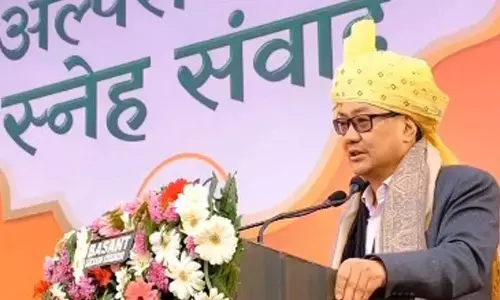Isro puts GSAT-7A in orbit successfully

The Indian Space Research Organisation Isro on Wednesday said its geosynchronous launch vehicle successfully placed the countrys latest advanced satellite GSAT7A into orbit The GSLVF11, carrying the GSAT7A, lifted off at 410 pm from the second launch pad at Sriharikota
New Delhi: The Indian Space Research Organisation (Isro) on Wednesday said its geosynchronous launch vehicle successfully placed the country’s latest advanced satellite GSAT-7A into orbit. The GSLV-F11, carrying the GSAT-7A, lifted off at 4.10 pm from the second launch pad at Sriharikota.
Weighing 2,250kg, the mission life of the GSAT-7A is eight years. It will provide communication in Ku-band over the Indian region. This new satellite, along with GSAT-7 and GSAT-6, dubbed the "Indian Angry Bird", will form the band of communications satellite for use by the Indian military.
Nearly 19 minutes after lift-off, the GSLV-F11 injected GSAT-7A into the intended orbit. It will be placed in its final geostationary orbit using the onboard propulsion systems. According to the Isro, the satellite would take a few days after separation from the launcher to reach its orbital slot.
GSLV- F11 is Isro’s fourth generation launch vehicle with three stages. The four-liquid strap-ons and a solid rocket motor at the core form the first stage. The second stage is equipped with high thrust engine using liquid fuel. The Cryogenic Upper Stage forms the third and final stage of the vehicle. Reflecting on the “successful” launch, Isro chairman K Sivan said this was the third one in 35 days and came close on the heels of the “grand success” of two missions in November. He said GSAT-7A was the heaviest satellite lifted by GSLV with indigenous cryogenic stage.
“The cryogenic stage of this vehicle has been modified to increase the thrust rate. GSAT-7A is an advanced communication satellite with a Gregorian Antenna and many other new technologies. The testing and realisation of this satellite has been carried out meticulously by ISRO team. We have signed off year 2018 on a high and positive note,” Sivan added.
The seventh launch of 2018 from Sriharikota marks the 69th mission of GSLV-F11 for Isro. On November 14, Isro’s GSLV-MkIII-D, which is dubbed by the Isro as the ‘Bahubali’ or “fat boy” of Indian rockets, injected into orbit a 3,423 kg communication satellite GSAT-29, the country’s heaviest to be put into orbit. India’s earth observation satellite HysIS and 30 other co-passenger satellites from eight countries were launched onboard Isro’s trusted workhorse Polar Satellite Launch Vehicle on November 29.




